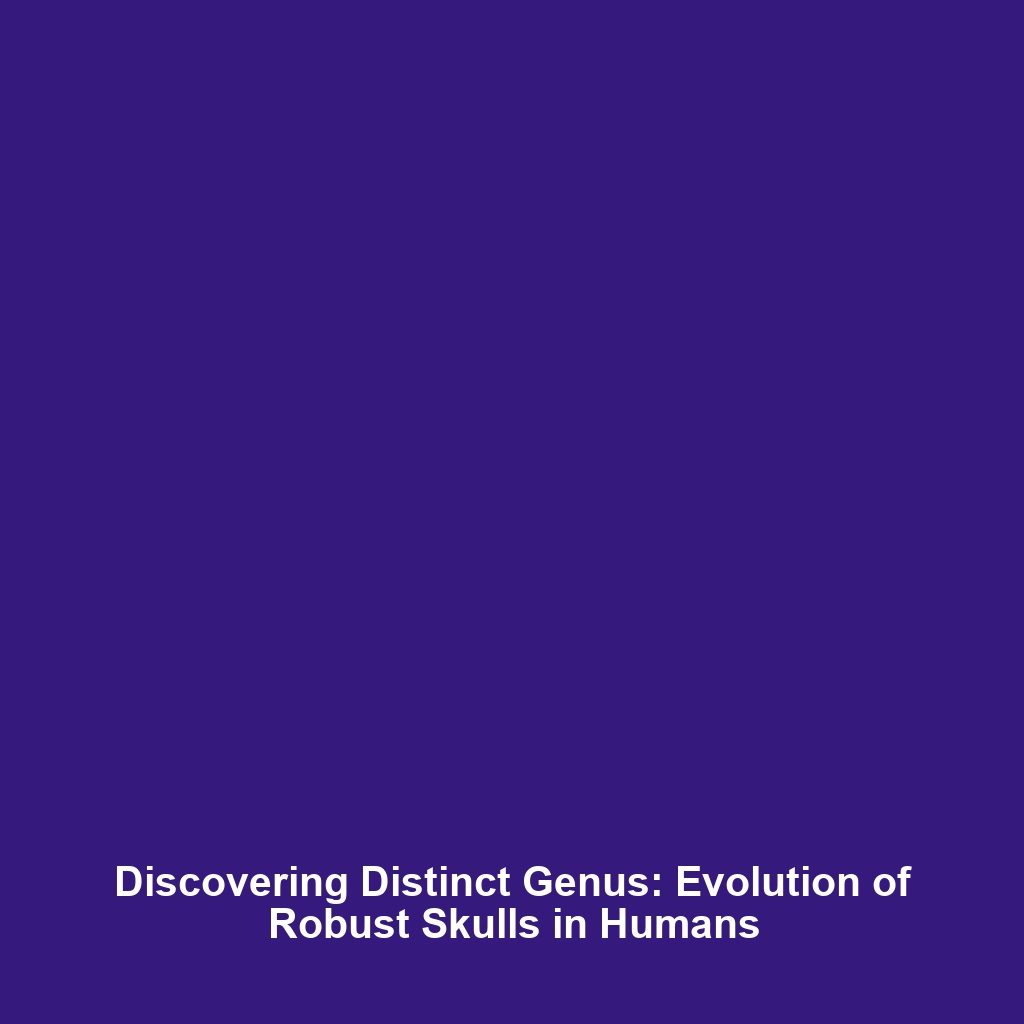Distinct Genus: Known for Their Robust Skulls and Large Jaws Adapted for Chewing Tough Vegetation
Introduction
The distinct genus characterized by robust skulls and large jaws adapted for chewing tough vegetation plays an essential role in understanding human evolution. This genus illustrates the dietary adaptations that occurred in early hominins as they faced changing environmental conditions. By examining the anatomical features of these hominins, researchers gain insights into how early humans adapted to their surroundings, influencing their evolution and survival strategies. Keywords related to this topic, such as human evolution, robust skulls, and dietary adaptation, enhance our comprehension of these adaptations within a historical context.
Key Concepts
1. Anatomy and Adaptations
This distinct genus features key anatomical traits such as:
- Robust Skulls: Designed to withstand the stresses of powerful jaw movements.
- Large Jaws: Capable of processing coarse and tough plant materials, indicating a specialized diet.
These adaptations are crucial in the study of human evolution as they suggest dietary preferences that might have driven other evolutionary changes in size, shape, and behavior.
2. Evolutionary Significance
This genus serves as a fundamental example in understanding evolution. The robust features indicate an evolutionary response to environmental pressures, showcasing how humans adapted to forage and survive. Key evolutionary theories are supported by studying these anatomical structures, revealing connections between diet, habitat, and evolutionary outcomes.
Applications and Real-World Uses
The study of this distinct genus provides significant insights into various applications relevant to human evolution, including:
- Anthropological Research: Offers data for reconstructing ancient diets and environments.
- Evolutionary Biology: Helps in modeling human adaptation and resilience.
Understanding how this genus contributes to human evolution further illustrates the profound connection between anatomy, diet, and survival strategies.
Current Challenges
Challenges of Studying the Distinct Genus
- Incomplete Fossil Records: Gaps in fossil evidence complicate the understanding of evolutionary timelines.
- Environmental Influences: Varying climates and habitats make it challenging to establish definitive dietary patterns.
- Technological Limitations: Current methods might not capture the complete picture of evolutionary significance.
These issues highlight the complexities of studying this genus in the context of human evolution.
Future Research and Innovations
Ongoing innovations in paleogenomics and advanced imaging techniques promise to revolutionize our understanding of this distinct genus and its impact on human evolution. Upcoming research focuses on:
- Genome Sequencing: To uncover genetic traits linked to dietary adaptations.
- 3D Morphometric Analysis: Studying skeletal features to identify evolutionary pathways.
These advancements hold the potential to illuminate how this genus influenced the path of human genetics and anatomical adaptations.
Conclusion
The distinct genus characterized by robust skulls and jaws is vital in the study of human evolution. Understanding its adaptations not only sheds light on past human diets but also informs ongoing research into our evolutionary history. As we continue to explore this intriguing area, further studies are warranted to unlock the mysteries surrounding human adaptation. For a deeper dive into related topics, check out our articles on human diet evolution and paleoanthropology studies.
